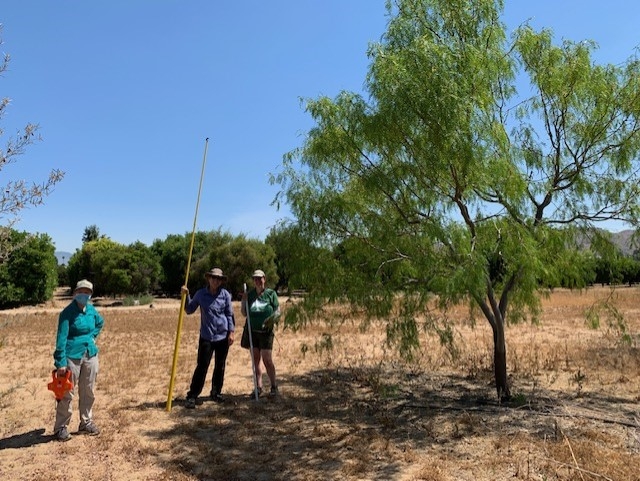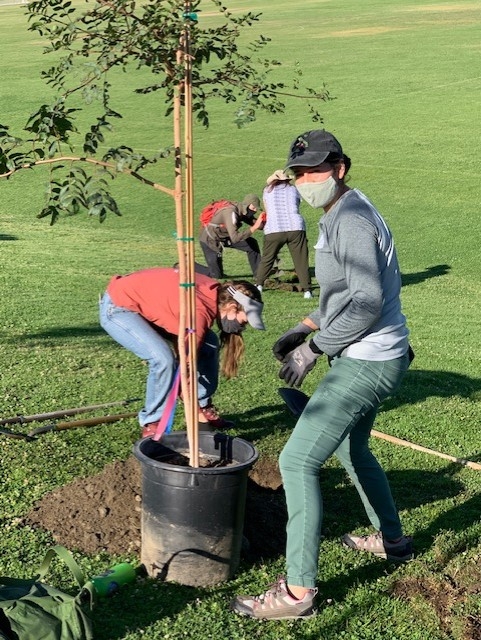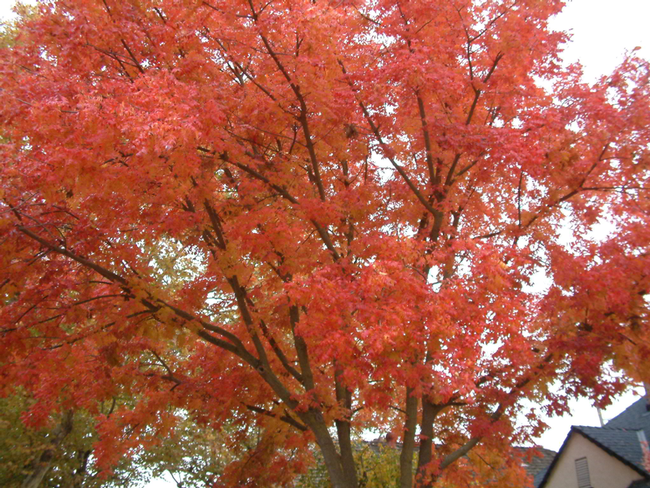The importance of trees to cool urban heat islands
Partnering for California
Spring 2021 proved to be one of the hottest in California, breaking heat records in several cities. It was a perfect opportunity to plant “climate-ready landscape trees” in inland cities identified in a study conducted by the University of California Cooperative Extension in partnership with the U.S. Forest Service.
The idea of bringing together community groups and volunteers to enhance tree canopies that cool urban heat islands --which can be more than 50 degrees hotter than surrounding areas -- in the Redlands area was spawned by Janet Hartin, UC Cooperative Extension environmental horticulture advisor for Riverside, San Bernardino and Los Angeles counties.
It became a reality when Mandy Parkes, district manager of Inland Empire Resource Conservation District, and Shelli Stockton of the University of Redlands received partner grants from the Climate Action Corps to start a nursery and get the “climate-ready landscape trees” in the ground. To date, nearly 100 trees from the study have been planted, including over 40 at the Redlands Sports Complex. As the volunteers in Redlands know, planting trees helps to cool these heat islands. After a long day of digging and planting in June, the volunteers were satisfied with their hard work and looked forward to sharing their experiences.
According to Parkes: “The project is moving along quickly due to excellent work of the Climate Action Fellows; inspiring research and support from Janet Hartin and the UC Cooperative Extension Master Gardeners who will ensure that residents continue to receive proper tree care help long after the planting ends; outreach by Mario Saucedo and his Redlands-based community action nonprofit organization, Common Vision Coalition.”
Saucedo, chairman of Common Vision Coalition, said, "It came together, all of us round-tabling on how we could do this pilot project and reach out to the community residents and offer them free trees for their homes."
Once the community accepted the project, the outreach began. James Berry of the California Climate Action Corps was excited after they got the green light from the city of Redlands to plant the trees.
"They are from two different species," said Berry. "The Western Bud and the Red Push Pistache. Both are heat tolerant and drought tolerant, making them ideal for the high temperatures we are facing, and the ones in the coming years as a result of the climate change."
“Our ‘Trees for Tomorrow' workshop we held last fall for city planners, wholesale and retail nursery personnel, landscape architects, landscapers, water districts community groups, and Master Gardeners resulted in pockets of multidisciplinary projects, tree planting projects across Southern California, including the Redlands project. The Redlands project exemplifies the core principles of a well thought out and executed project that includes long-term tree care, a real key to maximizing benefits of trees over their lifespans of 50 years and more.”
With a statewide drought forcing water restrictions, people are looking into options to save water. Hartin advises against sacrificing any trees.
"One of the things that I think is important to prioritize is to make sure that when we have to reduce our water use outside in urban areas, we maintain our trees as a top priority," said Hartin. "If that means for a year or two that our lawns and our flowering beds are going to go by the wayside, then that's just the situation."
She recommends something as simple as dragging a hose out and into the tree's drip line, making sure not to water the trunk, but the other side of the drip line where the active root system is.
"Climate-ready tree study: update for Southern California communities" by E. Gregory McPherson, Alison Berry, Natalie van Doorn, Janet Hartin, Jim Downer, Darren Haver and Erica Teach is published at https://www.fs.usda.gov/treesearch/pubs/60414.
To learn more about the study or how to combat climate change with trees:
“Trees for tomorrow start today.”
“Lush urban forest can help communities face climate change.”




